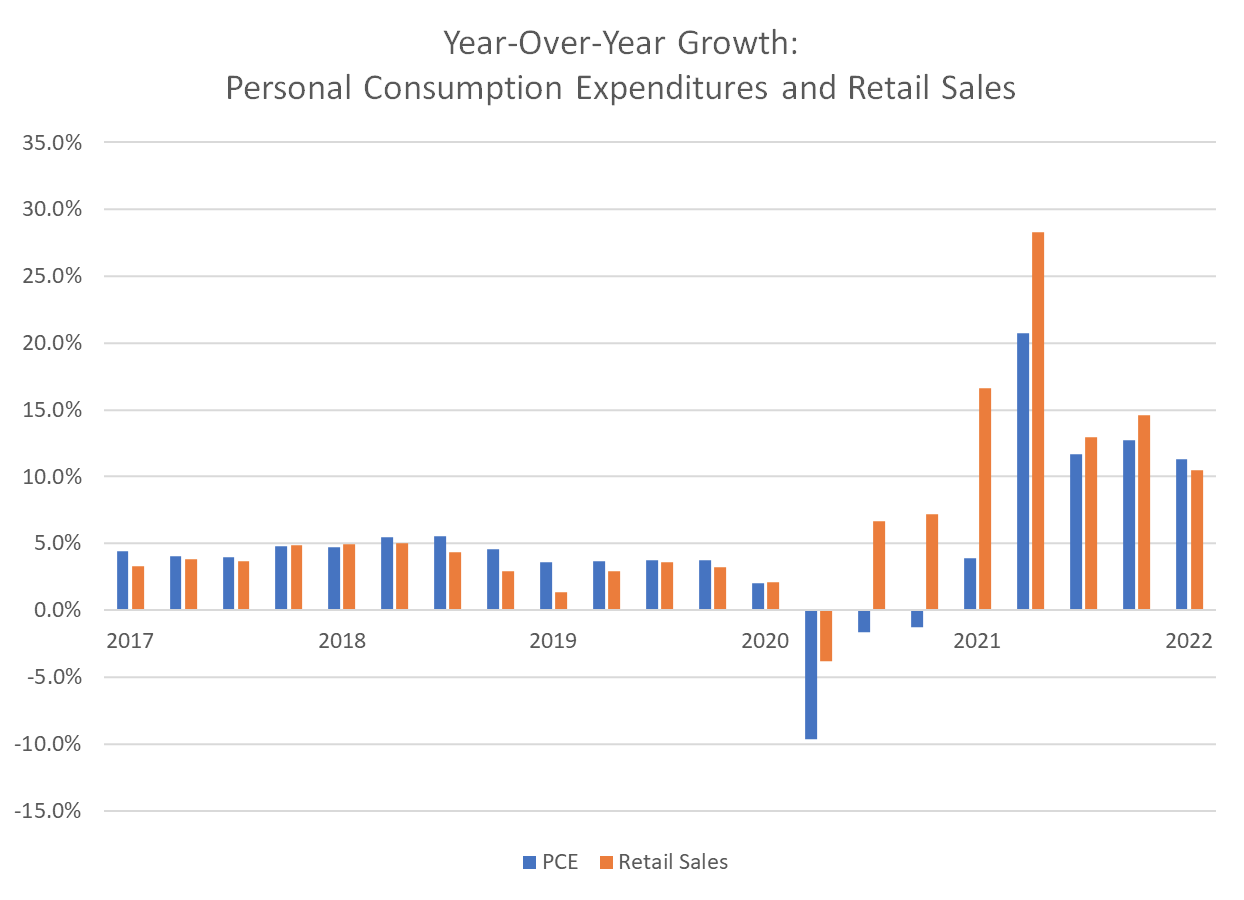The Daily Dish
May 18, 2022
The Resiliency of Consumer Spending
Inflation is a potent problem because it hits every single family (unlike unemployment, where the pain is focused on a relative few). Federal Reserve tightening works in the same way. The Fed pushes up the federal funds rate – the rate on overnight borrowing – which is the shortest-duration rate in the economy. Rates at all other durations get pushed up as a result and this blunt instrument affects every borrower and lender in the economy.
Perhaps because of this similarity, there has been a bearish tone to the commentary surrounding the Fed’s announced plans. Instead of recognizing that the inflation and overly strong demand growth are the flip sides of the same economic coin, there has been an excessive focus on the chances of a near-term recession (Eakinomics has been asked “are we already in a recession?”). It is almost as if the household sector was already flat on its back.
Yesterday’s retail sales report should be some comfort on this front. In April, total retail sales increased 0.9 percent and total retail sales excluding auto and gas increased 1.0 percent. Annualized, these are rates of 11.4 percent and 12.7 percent, respectively. That is quite rapid nominal growth.
As shown in the chart (below), retail sales (in nominal terms on a quarterly basis) track the year-over-year growth of personal consumption expenditures (PCE) quite closely. The labor market is strong, wage income is growing solidly (if threatened somewhat by inflation), and balance sheets have no glaring weakness. For this reason, PCE growth that was in the double-digit range in the first quarter looks on track to repeat this in the second quarter as well.
It is a reality that the overly strong growth in aggregate demand must cool in order to tame inflation. In the process, monthly data on employment, wages, income, and spending will become weaker. But the household sector is resilient enough at present to weather the economic medicine and remain in positive-growth territory.
Fact of the Day
The Department of Energy estimates its new rules regarding energy efficiency standards for “General Service Lamps” will incur $5.1 billion in increased costs.











